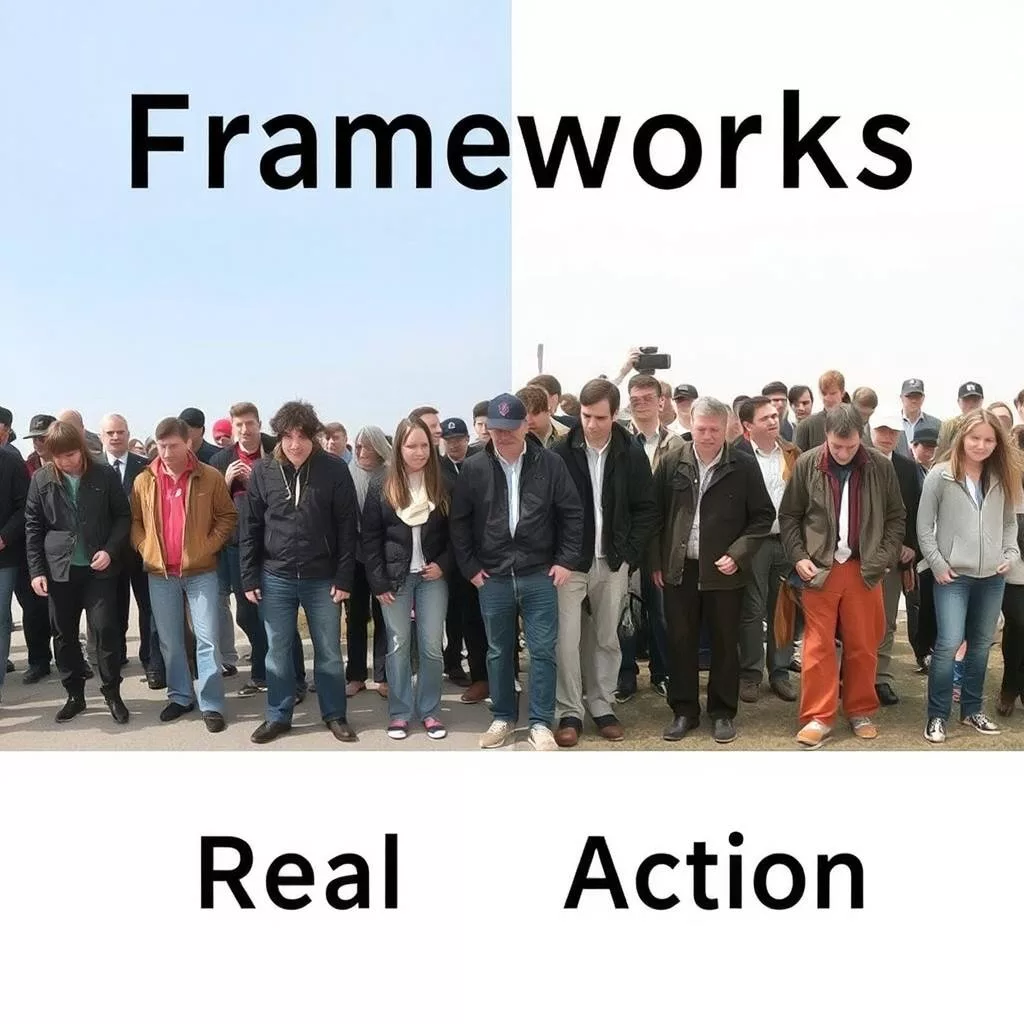Frameworks vs. Action

When Process gets in the way of Progress
The Framework Obsession
Frameworks are everywhere in the professional world. Whether it’s ITIL, Agile, Six Sigma, or any of the other countless methodologies, they promise structure, efficiency, and better results. And let’s face it—when applied well, they can deliver. But what happens when people become more obsessed with developing frameworks than using them to drive meaningful action?
The Framework Trap
In my experience, I’ve seen a recurring issue: individuals and teams getting lost in the creation of frameworks. Endless meetings, discussions, and iterations are spent perfecting a system that, in some cases, will never be fully implemented—or worse, won’t address the real issues it was designed to solve.
Meanwhile, the problems these frameworks are supposed to tackle—inefficiencies, miscommunications, technical debt—continue to grow. It’s as though we’re polishing the tools in the shed while ignoring the overgrown jungle outside.
Why Does This Happen?
Here are a few reasons why framework obsession becomes a problem:
- The Illusion of Productivity: Designing frameworks feels productive. There’s a tangible output—a document, a diagram, a process chart. But it’s not always impactful.
- Avoidance of Complexity: Directly addressing issues like broken processes, interpersonal dynamics, or technical challenges can be messy and hard. Frameworks provide a layer of abstraction that feels safer.
- Intellectual Vanity: Let’s be honest—there’s an ego boost in creating something that looks polished and smart, even if its practical value is questionable.
When Frameworks Work
This isn’t to say frameworks are inherently bad. They’re incredibly useful when:
- They’re adapted to the specific needs of a business.
- They don’t create unnecessary bureaucracy.
- They’re implemented alongside action, not in place of it.
A Call to Action
So, what’s the alternative? Balance. Use frameworks as tools, not as goals in themselves. Spend less time perfecting the “how” and more time doing the “what.” Focus on impact over elegance.
Ask yourself:
- Are we spending more time designing than doing?
- Is this framework solving an immediate problem, or are we creating problems to justify the framework?
- Are the people affected by this framework involved in its creation and execution?
Conclusion
Frameworks are a means to an end, not the end itself. Let’s not let our obsession with structure get in the way of the one thing that really matters: getting things done.
